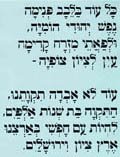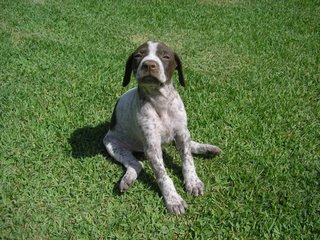Here are some questions and answers on uranium enrichment:
Are there different types of uranium? Yes. Uranium ore that is mined contains about 99 percent of the U-238 isotope. Less than 1 percent is U-235, the lighter isotope needed for nuclear fission that creates huge amounts of energy.
How is the uranium processed?The raw ore is milled into uranium oxide, also known as "yellowcake," then chemically converted to uranium hexafluoride which can be in the form of a solid, liquid or gas. This material is then shipped to an enrichment facility.
What do they mean by enrichment? Enrichment simply refers to increasing the concentration of the U-235 isotopes by separating them from the U-238.
Are there different levels of enrichment? Yes. A concentration of 3 percent to 5 percent U-235 is adequate for use in a commercial power reactor. This is referred to as "low enriched uranium," LEU. A concentration of 20 percent or more U-235 is defined as "high-enriched uranium," HEU. For weapons purposes, a concentration of 80 percent to 90 percent U-235 is desirable.
How is the U-235 separated? Two processes have been used widely: gaseous diffusion and use of a centrifuge. Gaseous diffusion, used in the United States, is technically more difficult and requires huge amounts of electricity. The centrifuge process, which uses the force of gravity, has been used in Europe for decades and is being pursued by Iran.
How does a centrifuge work? Gaseous uranium hexafluoride is pumped into small high-strength aluminum cylinders that are rotated at more than 300 meters per second, or roughly the speed of sound, which creates a strong centrifugal force. The heavier U-238 molecules push toward the outer wall and drop to the bottom, while the lighter U-235 molecules remain at the center and are collected at the top of the chamber.
 How many centrifuges are needed?
How many centrifuges are needed? The centrifuges are installed in stacks and groups of stacks so that the slightly enriched gas can cascade from one unit to the next for more separation.
How difficult is it to build a system of centrifuges and how many do you need? The material must be of high strength and built to extremely precise specifications to avoid an imbalance during high-speed rotation. Operating a system of hundreds, if not thousands, of centrifuges, also is complex.
How many centrifuges does Iran have? Currently it has an operating cascade of 164 centrifuges at a pilot enrichment facility in Natanz, and it is building more. The facility is scheduled to have 1,000 centrifuges in the next year or two, according to the Institute for Science and International Security (ISIS), a Washington-based arms control group. Iran has said it plans to begin installing 3,000 units this year, eventually to have more than 50,000.
Iran claims it needs to produce fuel for its future commercial nuclear program including a planned 1,000 megawatt commercial power reactor already under construction. Why is that being questioned?
Uranium enrichment is not necessary for a commercial nuclear program. European countries and Russia are prepared to make available low-level nuclear fuel if that's the only purpose for an Iranian enrichment program.
What's needed to get enough highly enriched uranium for a weapon? It takes about 1,500 centrifuges operating for a year to make enough highly enriched uranium for a weapon.
How can outsiders know if centrifuges are being used to make low-enriched fuel or highly enriched material for a weapon?It is virtually impossible. The technology is the same. Centrifuge systems can be hidden. Iran appears to be building two large fuel enrichment facilities 75 feet underground, covered with concrete and dirt, according to unclassified satellite images made available by Digital Globe and ISIS.
Iran could have a 500-centrifuge cascade for low-level enrichment, but then build a secret second cascade to enrich the material further without detection, says ISIS President David Albright.
Copyright: Associated Press, Source: "Q&A on Uranium Enrichment", JP [Jun1, 2006]














